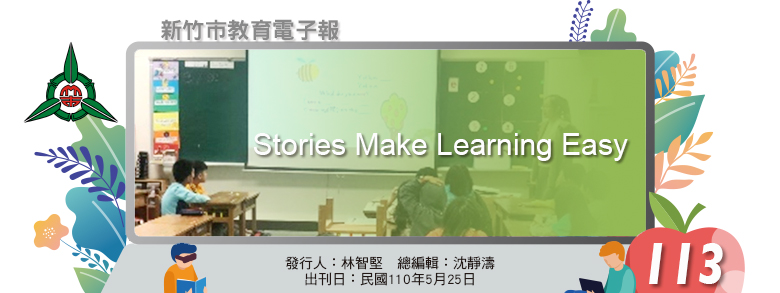

 |
 |
|||||||||||||||||||||||||||||||||||||
|---|---|---|---|---|---|---|---|---|---|---|---|---|---|---|---|---|---|---|---|---|---|---|---|---|---|---|---|---|---|---|---|---|---|---|---|---|---|---|
|
This article is about how a teacher designs and practices a teaching demonstration. Stories acts as an interesting bridge to practice the sentence pattern and phonetic sound in a meaningful context. Students are found to be engaged in doing the repetitive drills lively and playfully through the stories. The story triggers students’ eagerness to read the content, to listen to others and to learn real daily language.
Before teaching It’s stressful to open my classroom even though I have taught English for thirteen years. Except the repetitive sentence pattern drills and phonic practice through games or PPT, stories are the interesting ways which build on the foundation of many ESL skills, including reading, writing, grammar, listening, and discussion. I applied stories in reviewing and in teaching phonic sound long E. That might take a break from formal ESL lessons and bring English to life with brief yet entertaining effect. Children really love stories. Stories invite students to an imaginative world by expanding students’ minds to dive a bit deeper into what the story is about. I rewrote “Bear’s Big Day” by adding time to his first day schedule. Students were elicited to read the time in the story and they practiced the sentence pattern “What time is it?” many times. Also, I read students Eric Carl’s “The Very Hungry Caterpillar” to teach long E sound by modifying the content words into long E words, such as green tree, yellow bee, red deer.
This worksheet is the process of students’ creation in teamwork. They start from brainstorming long E words and then group the words into adjectives, nouns and verbs. They create the rhymes by using –e- words and –ee-words in teams.
After the teaching Through this demonstration teaching, I have learned a lot through listening to the suggestions of each teacher. It’s a journey of creation and a presentation of a teacher’s dreamy process of helping students to grab the sound, the words, the sentences and to create rhymes and the stories. It’s an exploration of using different ways to teach and to enjoy companying students in learning.
|
||||||||||||||||||||||||||||||||||||||



